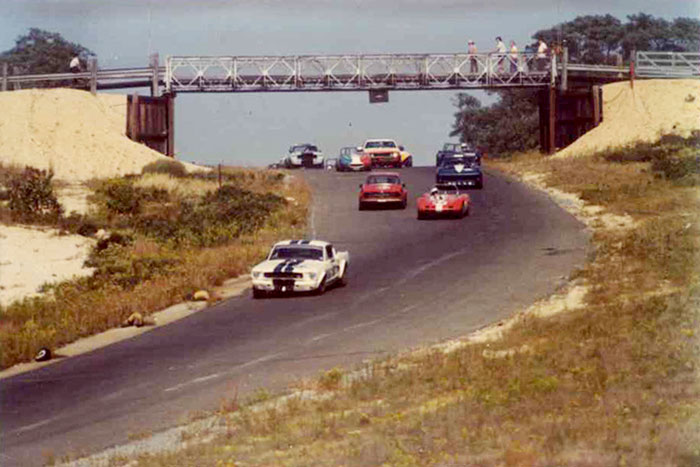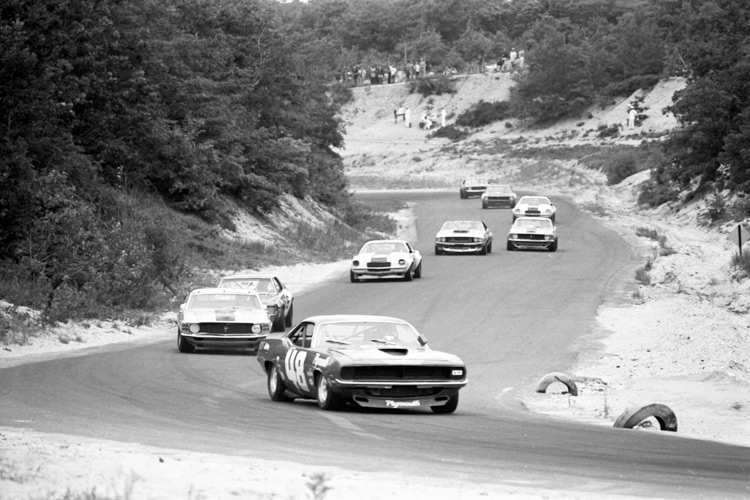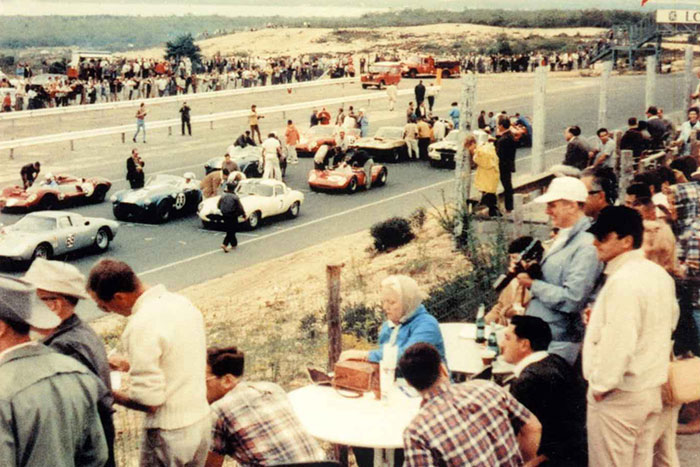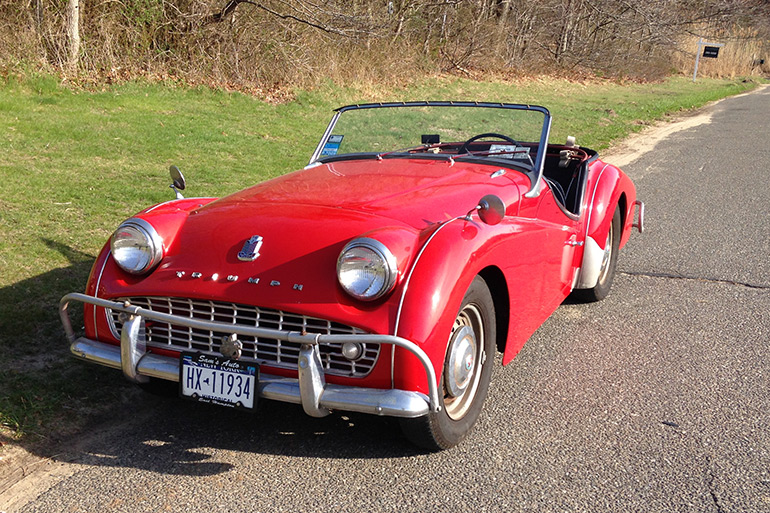The Race Circuit – Memories of Bridgehampton

When I was 17, I asked my dad if he would take me to the Bridgehampton Race Circuit, where some of the greatest race car drivers in the world were driving around this curvy 3-mile track at speeds approaching a hundred miles an hour. I’d heard that the NASCAR racers were there: Junior Johnson, Fireball Roberts, Richard Petty.
I was going to college in the fall. I’d just gotten my driver’s license and Dad had promised me a car. Dad thought about it a minute, then said, “How about tomorrow?”
We lived in Montauk then, a good 20 miles from the Bridgehampton Race Circuit. So we never heard the noise. But on occasion, I’d accompany Dad or my mom to Bridgehampton on a weekend shopping expedition, and then, well, you couldn’t miss it. Although the track was three miles north of town, nearly halfway to Sag Harbor, the buzz and roar of the cars on the racing days was quite audible downtown. It would go on for hours. And so I would imagine being in the stands up there. And now, with Dad’s approval, we were going.

Back in those years (this was in the late 1950s), both Montauk and the Hamptons were very rural — sleepy and quiet places — with old New England villages dotting the landscape here and there. Ancient wooden windmills, town greens, cemeteries and ponds with swans in them gave way to stores and restaurants downtown. Surrounding the towns were potato fields. You could see across them for miles. And everybody knew everybody. In the summertime, there were summer people and tourists to light up the place a bit.
And then there were the new arrivals — among them, us. Two years before, my dad had bought White’s Drug Store and moved to Montauk from a New Jersey suburb where I’d grown up. I worked in Dad’s store. Dad got my younger sister, Nancy, her own horse, which she stabled at a ranch near the lighthouse.
We turned right on Main Street and took Lumber Lane to Millstone Road and the track entrance. There, thousands of people sat in the stands on one side of the straightaway cheering the racers. On the other side was the pit area where the dozens of colorful racing cars, screeching in and roaring out, were being tended to by mechanics, racing team members and drivers. Surrounding all this was nothing but sand dunes and scrub trees. You could see across them all the way to the bay and the ocean.
A bridge crossed over the straightaway connecting the spectators with the pits. It seemed you could just walk over that bridge with the racing cars roaring underneath and no one would stop you.
After a while watching the racers, the smoke, the spin-arounds and cars limping along the apron of the track with blown tires or even fire from blown engines, I got my dad’s permission to walk over the bridge into the pit area where, among all the mechanics working on the racing cars, I was able to talk to people who were happy to tell me, as we peered under a hood, what they were doing. I thought then, and I think now, looking back upon it, that this was an extraordinary experience that probably should not be happening.

And visiting the track again and again, right through to 1980, the same thing happened. I took lots of pictures. And after several visits, particularly after I started this newspaper, I published stories and photographs of the races up close and personal with the greatest drivers in the world, including Dan Gurney, Bruce McLaren, Mark Donohue and Stirling Moss. Top speeds exceeded 180 miles an hour.
If the landscape was rural and bucolic in those days, there were numerous other loud racing car venues nearby. A drag racing course was in Westhampton Beach. At the Riverhead Raceway in Calverton, local farm boys raced old cars around a figure 8 track that permitted, even encouraged, earth-shattering crashes where the track crossed itself in the middle of the 8. Race days at the track concluded with the Demolition Derby.
At the same time, there was noise in the air — not from the tiny East Hampton Airport, but from the military airport where fighter jets such as F-14s, seen in the movie Top Gun, screamed across the sky as they went through their tests and tryouts. They’d swoop, roll and, sometimes, bust through the sound barrier. All in all, eastern Long Island was quite the place.
Racing at Bridgehampton had not started with the building of the track in 1957, but years before, when from 1915 to 1921, early automobiles were raced along the public roads — Main Street served as the start and finish line — as part of the town’s annual carnival. Then, after the Second World War, American soldiers coming home arrived with European sports cars they’d bought for cheap.
These men raced Ferraris, Triumphs, Austin-Healeys and Morgans at speeds over 100 mph not only on Main Street, but also down Ocean Road, Sagaponack Road, across the little bridge at Bridge Lane, then up to Main and the finish line. These races took place from 1949 to 1953. Tens of thousands of spectators lined the roads behind hay bales and snow fencing until, in 1953, three spectators were injured. Thus ended street racing. And so, they built that big track.

In 1966, after six years of Dan’s Papers, I answered an ad and bought a 1959 Triumph TR3 sports car from the owner of a bar known as CBs in Hampton Bays. I’ve kept it garaged, and I still drive it occasionally today.
And I’ve even raced it around the Bridgehampton Race Circuit, coming down the straightaway and into that awful Millstone turn to the right at the bottom of the hill, then winding the rest of the away around. A racing school was at the track in 1983. I wrote about it.
But people were now objecting to the noise at the track. Soon the town passed a law. All racing cars had to be muffled. With that, racing there came to an end.
Today, the race track is gone, replaced by a golf course which, in honor of its heritage, is called The Bridge. Its driveway is the old Millstone turn and the straightaway. Runs alongside a fairway. So Bridgehampton lives on in memories such as this.



